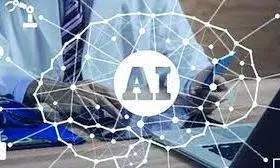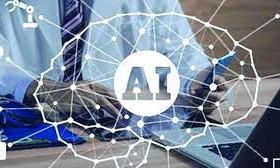
A new book, ‘Generative AI in the courtroom – a practical handbook for modern justice,’ set me on a course down memory lane, reminding me of the gaffes caused by fear of technology or gadget phobia among various sections of people when computers were introduced. Though not a keen follower of technology, I landed at the book launch because of the authors. Aspire K Swaminathan, an entrepreneur who was once helping a political party with its election and propaganda strategies, is personally known to me and co-author Anita Thomas, a lawyer, is the wife of long-time friend Thomas A Thomas.
So I, a technologically challenged person, went to learn about AI with some skepticism but came enlightened with some nagging doubts cleared. For the book launch itself was educative before the book provided an understanding on a wide range of things, starting from AI or Artificial Intelligence itself or on its advanced form, Generative AI, and how that could help legal professionals do better when I had always associated law and its practice only with the human mind and not any machine.
I recall the 1980s when computers, catching up with Indian offices, raised a huge hue and cry with people talking about the evils of computerization. The prime reason being job loss for human beings that gave a reason for trade union leaders to whip up a frenzy among employees. It’s a different story that the news agency where I started my career computerized its regional offices in the four metropolitan cities without any retrenchment then. But in public sector offices they did manage to create a scare. I remember one trade unionist boasting about their success in keeping computers at bay for half a decade.
Of course, beyond that they could not do much and could not even stop their children from enrolling for computer courses and moving to the USA. So computerization could not be stopped in the country though the trade unions came up with innovative ideas to counter the general perception that computers worked faster than human beings. When the railway reservation was first computerized, the same staff who were manning the counters prior to that continued issuing tickets and one day the union leaders realized that the serpentine queues that used to be the norm have suddenly vanished.
Since the computers helped issuing tickets quicker, the queues moved faster, giving the jitters to the union leaders who informally told their members to slow down the process so that all their comrades continued to sit at the counters, lest the officers closed down some counters realizing that they were empty. Much water has flown down the Cooum that still runs close to the Southern Railway headquarters in Chennai and today every operation in the railways depends on computers that once created a scare akin to the one AI is now generating.
But unlike the 1980s when everyone loved computers – even those who protested against it in their offices wanted it in their homes – the fears associated with AI were accentuated because people in the know of AI had cautioned against it. Geoffrey Hinton, who is considered as the godfather of AI, and Elon Musk of SpaceX and Tesla were two top technically sound persons who have raised an alarm against AI, causing doubts in the minds of the people.
Though the fear raised during rampant computerization about human beings becoming redundant subsided after people saw for themselves the machine needing real people to do its work, an incident in 1997 brought back the fears when IBM’s Deep Blue defeated Gary Kasparov in a game of Chess. Kasparov was then the reigning champion of the game. But on the whole the computer remained subservient to man and did not try to take over his roles other than in science fiction movies. In the case of AI, too, that fear cropped up and when the Indian judiciary decided to incorporate it in its work, more fears were raised on justice getting derailed.
It is in that backdrop, the book by Aspire Swaminathan and Anita Thomas comes up to dispel fears. The original fears over AI were job loss, loss of control, ethics and privacy, besides concerns on causing dependency on the machine and losing essential human feelings. Some even foresaw a dystopian future looming in the horizon, pushing the society towards a ‘1984’ like situation, as envisaged by George Orwell in his novel written in 1949. So, even if it was allowed elsewhere, it should not come to the courtrooms, many argued.
But Aspire Swaminathan and Anita Thomas think otherwise and categorically state that Generative AI (in this form it should look more menacing than the usual AI) ‘is not only the future of law but the present to guide you through success.’ They dispel the fear of AI leading to the law losing its humanness. The book, sans technical jargons or confusing algorithms, however, explains what Generative AI is all about and how its applications in the field of law will help all stakeholders. Through case studies, it enunciates AI’s role in ensuring justice, quick and fast.
Dispelling prevalent fears like leak of confidential data, compromise in client confidentiality, data being used without client’s consent and hacking and data breaches, the authors instil confidence in the reader saying that legal AI systems have robust multi-layered security protocols. In short, the book asks: Who’s afraid of AI?
